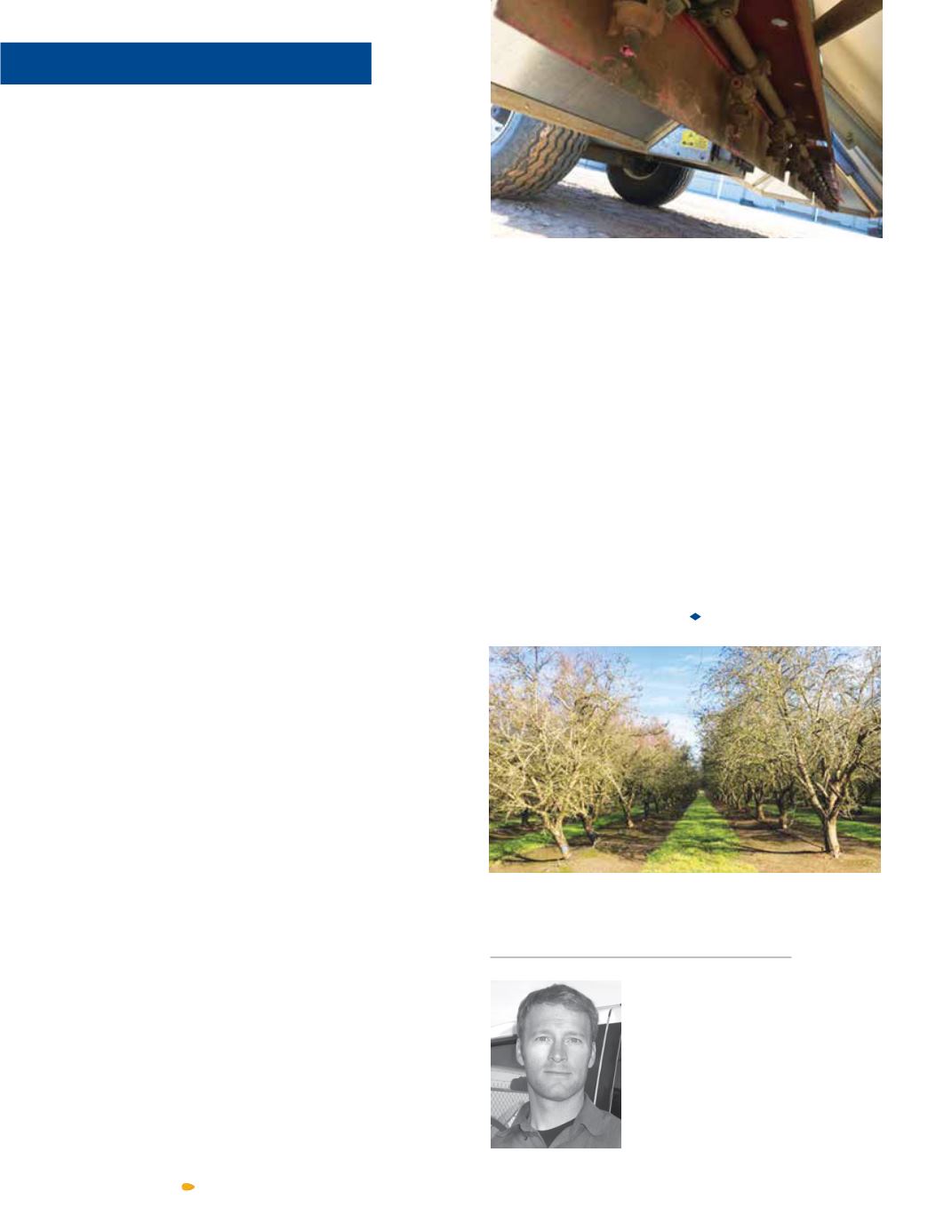
the orchard floor to assist with drying, and to remove
broken, dead, and diseased limbs. Another reason that
is often not discussed it to reduce pest and disease
pressure. UCCE research out of the Sacramento Valley
has shown a 6 percent decrease in NOW infestation
in the upper canopy in pruned trees due to better
insecticide spray distribution in the upper canopy.
Soil Sampling for Managing Water Infiltration
Soil should be sampled regularly from orchards to
determine nutrient and mineral levels. Samples should be
taken from multiple depths and areas within a field. If the
management of the block are the same, then samples
from the same depths can be pooled to help save on
expenses. Cores should be sampled in 12” increments
to a minimal depth of 36,” and in the cases of salinity
management, down to 60.” Nutrients within the soil,
the calcium to magnesium balance, soil pH and salinity
should be discussed with a consultant, certified crop
adviser, or the local UC Farm Advisor.
If water run-off has occurred from increasing water
infiltration issues, soil sampling of the top few inches should
occur and analyzed differently. Due to the amount of
water applied through irrigation, it is easy for minerals to
be leached out of the surface soil, leading to the formation
of soil crusts from the loss of soil aggregate stability. Once
sampled and analyzed, use these results to determine the
rates of calcium, magnesium or other soil amendments.
Calcium is the most widely applied soil amendment
within California. It is sourced through a variety of
products, but the cheapest are either lime or gypsum.
Lime should only be used when pH is below 7, while
gypsum can be used at any pH. If the soil is alkaline
(high pH) and has high amounts of calcium, acidifying
the soil will free up calcium. If deficient on magnesium,
dolomite could be soil applied during the dormant
period. Other products are available that can be surface
applied or water-ran – contact your local UCCE farm
advisor or agronomist for products and rates.
The Final Thought
The dormant period is a good time to review changes in
management practices and determine if they have had
a positive impact on the profitability of the operation.
Consider the perceived or realized benefits of tree
health, the amount and expense of products applied
and irrigation practices. What should be improved next
year
?
What inputs should be increased or decreased
?
If changes need to occur, be careful about changing
too much as this makes it hard to pinpoint the practice
responsible for the response.
IN YOUR ORCHARD
David Doll, UCCE
Nut Crop Pomology
Farm Advisor,
Merced County
Maintenance on spray rigs should be performed. With
herbicide rigs, check pumps and pressure, nozzles for wear
and the spray pattern for the proper percentage of overlap.
Applications out of specifications will increase pesticide use and
expense.
Once trees are defoliated, dormant practices should begin. This
includes spur sampling and mummy removal.
4 4
A L M O N D F A C T S


